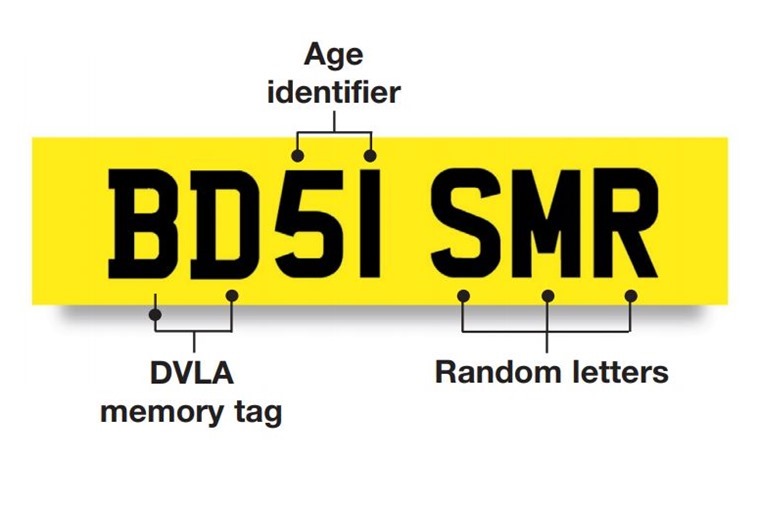71 plate lease cars: Everything you need to know
It really doesn’t feel like it, but it’s almost six months since the introduction of the 21-plate, which means one thing: it’s almost time for a new one.
From 1st September, the 21-plate will give way to the shiny new 71-plate. With a bumpy year for new car deliveries and registrations, here’s everything you need to know about the new number.

What does the 71 plate actually mean?
Let’s start with the basics. The UK’s number plate issuance system means that since 2001 registrations for new vehicles change twice every year. The first change occurs in March, and the second in September.
So, any vehicle registered on or after 1 September will receive the new 71 plate in place of the outgoing 21-plate. Here’s a handy diagram that helps you decipher number plates.
The current registration system was introduced in 2001, and it can be difficult to understand. You can boil it down to three main components:
1. The two letters at the beginning of every new plate refer to the regional office where it was issued. You can see the full list of these local memory tags here.
2. The two numbers in the middle of the plate tell you when it was issued (full table below).
3. The three letters at the end of a plate are completely random and are there to ensure an almost infinite amount of registrations can be created.
How to tell the age of a car by its number plate
Two sets of numbers are issued every year, which is known as the age identifier. Some are obvious, others are not. A 19-plate for example, refers to a car registered between March and September that year. A 69-plate though, refers to cars issued between September 2019 and February 2020.
Here’s a handy table to identify some recently registered cars, as well as a few future plates to look out for:
| Registration Year | Digits |
| 2013 | 13/63 |
| 2014 | 14/64 |
| 2015 | 15/65 |
| 2016 | 16/66 |
| 2017 | 17/67 |
| 2019 | 19/69 |
| 2020 | 20/70 |
| 2021 | 21/71 |
| 2030 | 30/80 |
| 2040 | 40/90 |
| 2050 (final year for two-digit plates) | 50/00 |
Using this system will allow the DVLA to issue number plates until at least 2050, with an infinite amount of combinations available for issuance for another three decades. The last number plates to use this system will be issued in 2050, ending with ‘00’.
Will current lead times and COVID delays affect the 71 plate?
The last year has been one of uncertainty and delays for the new car market. Multiple lockdowns certainly haven’t helped, while many delivery drivers and automotive workers have had to isolate too – only compounding the issue for those desperate for a new car.
What’s more, the chip shortage has seriously affected manufacturers’ ability to build the cars in the first place. All this means that you may have extended lead times for your 71 plate – depending on the make and model of course.
If you want to avoid the wait, but aren’t particularly bothered about your car featuring the latest 71 plate, you could always check out our partners’ in-stock deals. These are vehicles that have already been built and will take much less time to arrive.
The only thing is that unless they are unregistered before September 1st, they won’t feature the 71 plate. For most people that will be a small price to pay. Click on the button below to find the best in-stock leasing deals currently available.
What about personalised registration plates?
If you were wondering if you can put a personalised plate on a lease car, you can. While some might like driving around displaying their shiny new 71 plate, perhaps you’ll be putting on a cherished number you already have on your current vehicle.
Provided you have the permission of the leasing company and have exchanged the relevant registration documents (the V750) you’re free to put whatever plate you wish on the vehicle.
If you fancy a brand-new plate for your brand-new lease car, you can buy them directly from the DVLA – including a host of 70 plates that will have been retained for sale at auctions. Depending on the plate in question though, it can be a pricy prospect – some plates regularly top £50,000 at auction.

Which number plates are banned?
In the past, we’ve shown you some of the banned number plates that are revealed every year. The DVLA issues a black list of potentially offensive plates that will never make it on to the open road. This year, there’s been an interesting and quite understandable development.
Any plates that resemble “COVID” have been added to the list of sweary expletives. This mainly refers to personal plates or those that could already exist such as “COV 1D” or “CO19 VID”. But it’s fair to say you won’t be seeing “CO71 VID” on a car anytime soon.
The DVLA commented: “We suppress any registration number combinations that may cause offence, embarrassment or are in poor taste. This includes combinations that could be interpreted as referring to COVID-19”.
Transversely, the agency has reported a rise in people looking for healthcare related plates. At the height of the pandemic last year, the number plate “1 NHS” sold for a whopping £120,000.
Ready to find your 71 plate lease car?
For those looking for a new lease car on a 71 plate, you’ll find what you are looking for on Leasing.com – just click on the big orange button below to start your leasing journey.
If you’re not ready to take the plunge just yet, remember you can find plenty of info on how leasing works, choosing your lease plan and selecting your car in our ever-expanding expert guides section.

